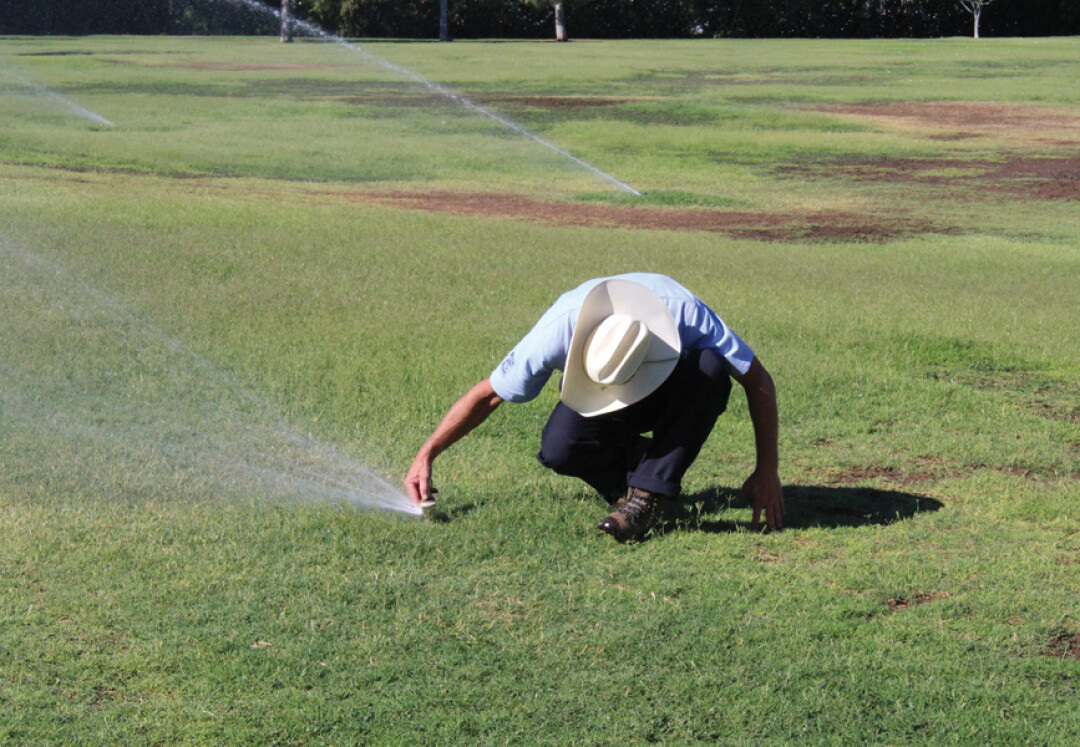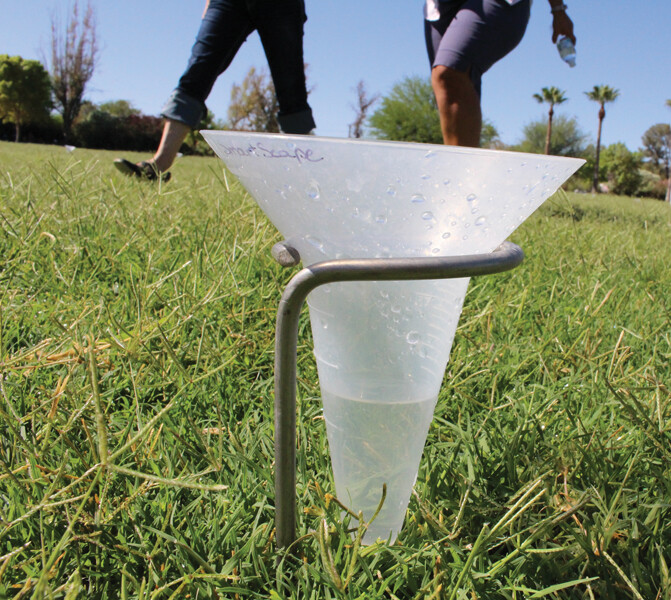4 Steps to Water-Smart Lawns and Landscapes This Summer
Lain Leoniak | Tuesday Mar. 1st, 2016
Even though the snow is still on the ground, it is the perfect time to start thinking about your outdoor landscapes. A little planning now makes for healthy, attractive, water efficient lawns and gardens for you to enjoy this summer.
Step One: Know Your Dirt
Good dirt has organic materials that hold and move water well, provide necessary nutrients and allows water to percolate down to the roots where it is needed. It has a mix of particles of varying sizes and shapes that allows water to be absorbed by the plants.
Soil types range from coarse to fine. To get a basic idea for what kind of soil you have, place approximately one tablespoon of soil in the palm of your hand. Add water one drop at a time and knead the soil to break down all the larger pieces. Soil is the right consistency when it is like putty. For more information visit the outdoor resources page at bozemanwater.com after clicking the water conservation button.
Much of the soil in and around Bozeman is fine. These heavy soils do not allow water to move easily and as a result, water quickly pools and runs off into the street and storm drains. Depending on where you live around town, this dirty water can end up in our streams, so it is important to know your dirt and water accordingly.
Once you have a general idea of what kind of soil you are dealing with, follow these three steps for awesome dirt.
• Begin with deep spading, plowing or rototilling – to a depth of about six inches – to break up compacted soil and allow root systems to grow deeper into the earth.
• While tilling, add organic matter such as compost or shredded leaves to improve penetration.
• Add soil amendments based on the results of the DIY soil test described above.

Step Two: Get Sprinkler Savvy
While we cannot control how hot or dry it is, we can control how efficiently we water our lawns and landscapes. A recent survey indicated that seventy-two percent of Bozeman residents have automatic in-ground sprinkler systems. If they are well designed, operated and maintained, they can save water. Otherwise, automatic systems can easily guzzle hundreds and thousands of gallons of water per month.
There are lots of different types of sprinkler systems and it is important to understand what will efficiently meet your particular watering needs.
Automatic sprinkler systems can cover large areas and offer convenience with programmable controllers. Watering times and seasonal adjust functions are important to understand for efficient watering. Make sure the programs are scheduled to water between 4 am and 8 am for maximum efficiency.
Turn off the system when it rains or, better yet, install a rain sensor to do it for you. A rain sensor detects precipitation events and when a certain amount has fallen, it stops regularly scheduled watering. When the sensor dries, it allows the system to resume normal function. Rain sensors and weather based controllers can be retrofitted on existing systems. Rebates on rain sensors and controllers are available to qualified customers through the City of Bozeman.
Drip systems are good for landscape beds to water individual plants or for a small yard. If you install drip to water a lawn, be sure to use a qualified installer. Because drip systems deliver water directly to plants, there is very little water lost to evaporation compared to sprinkler systems. It is also great for mulched beds because it soaks into the soil without disturbing the mulch.
Hand watering is the simplest and cheapest way to water and only requires a hose and portable sprinkler head or nozzle to control flow. Using a hose without a nozzle is highly inefficient because it applies too much water too quickly and causes runoff which washes away topsoil and mulch.
When water stops soaking into the ground, simply move to another area. This makes it easy to avoid over watering. To make sure water has reached the roots, an hour or so after watering, sink a screwdriver into the soil to a depth of 6-8 inches to assess soil moisture. This is also a good trick to determine whether to water or not. If the soil is moist, feel free to hold off a day or two before watering again. When hand watering individual plants, use a watering can or hose with a nozzle. Water each plant once. Repeat when the water has soaked into the ground.
Step Three: Water Efficiently
Regardless of how you water, apply these three easy tips for efficient watering:
• Know how much water your plants need;
• Know how much water your sprinkler system delivers;
• Match your watering schedule to your plants’ needs.
How Do I Know How Much Water My Lawn and Landscapes Need?
For lawns, it is best to water deeply, but infrequently to encourage deep root development. The goal is to apply enough water to percolate down to the deepest root depths. If you have heavier soils, it is recommended that when you water, break up the total watering time into shorter segments. For example, if you water 30 minutes on a given day, break it up into two 15 minute, or three 10 minute cycles to allow the water to soak into the ground. Allow at least one hour in between cycles. 
How Much Water Do My Sprinklers Deliver?
This is an important piece of information. Without it the risks of over watering are high. An easy way to figure this out is to use at least twelve flat bottomed cans (tuna or cat food cans work), placed evenly across your lawn. Run your sprinklers for ten minutes. Use a ruler to measure the depth of the water in each can and write it down. Add up the amounts and divide by the number of cans. This number is the average amount of water your sprinklers deliver in ten minutes. The City of Bozeman Water Conservation Division also offers DIY audit kits for rent with step by step instructions, or you can make an appointment for a free audit.
How Long Should I Water?
Now that you know the average amount of water delivered by your sprinklers, you can figure out how long to run them. Remember to account for precipitation and use the screwdriver test to check soil moisture.
How Often To Water?
Water only when your lawn needs it. One way to determine this is to step on it. If it does not spring back or you can see your footprint, it is time to water. A good rule of thumb is 1-1.5 inches per week during peak times (July and August) but less in May and June. By Labor Day you should reduce watering to once per week or once every 5 days to prepare your grass for dormancy.
What About Landscape Beds?
It is important to remember that trunks and leaves do not carry water to the roots of trees or shrubs. The edge of the leaf canopy, known as the drip line, is where the roots are so make sure the water is delivered there. Like grass, shrubs and perennials also like deep but infrequent watering. Trees require more water because they have deeper root zones. These zones store lots of water and can be watered less frequently than smaller plants.
Step Four: Follow a Maintenance Plan
A little regular maintenance will keep your water smart lawn and landscapes looking great. Monitor your sprinkler system regularly, look for broken or misaligned nozzles and check for leaks. Keep an eye on the temperature and rainfall and watch your watering schedules. Adjust your watering as needed throughout the season.
Keep your grass 3 inches or longer. Taller grasses cool the soil, encourage deeper roots and make it less susceptible to drought. Regular weeding makes water and nutrients available to your lawn and landscapes. Get aggressive early in the season before weeds are established. Be sure to prune shrubs and trees when dormant. Pruning during the growing season spurs growth and increases watering requirements.
In addition to saving water, following the steps above will guarantee less time working and more time playing in your beautiful outdoor space or beyond this summer.
| Tweet |
